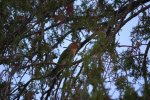- Joined
- Sep 30, 2013
- Messages
- 61,608
- Reaction score
- 64,858
- Gender
- Male
- Political Leaning
- Moderate
In Phoenix, about 30 years ago, about 20 peach faced lovebirds (AKA Rosy Faced Lovebirds) escaped from an aviary. It turns out that the hot desert is a perfect place for these little guys, and they adapted quite well. They are originally natives to SW Africa and reside mostly in Angola, Namibia and S. Africa. There are now thousands of them in the valley of the sun. In my neighborhood, they are everywhere, but they are just a blur, they fly pretty high and make a lot of noise, I rarely see them up close. I've tried setting out feeders, but they get taken over by nasty birds and mourning doves and African doves. Early this morning, around 7 am, it was already above 90 degrees (110 now), and I noticed that a flock of 5 flew into my Arborvitae tree. I tried to get pics with my cell phone, but no luck, and they flew away. I went back inside and got the good DSLR and the big lens. Fortunately, a few of them came back, and after adjusting the focus so that everything was in focus, rather than what was closest, I got a few good pics.
I love these little guys, enjoy:
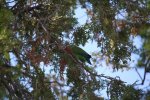

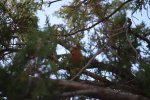
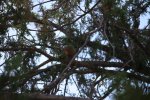
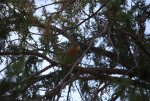
I love these little guys, enjoy:







